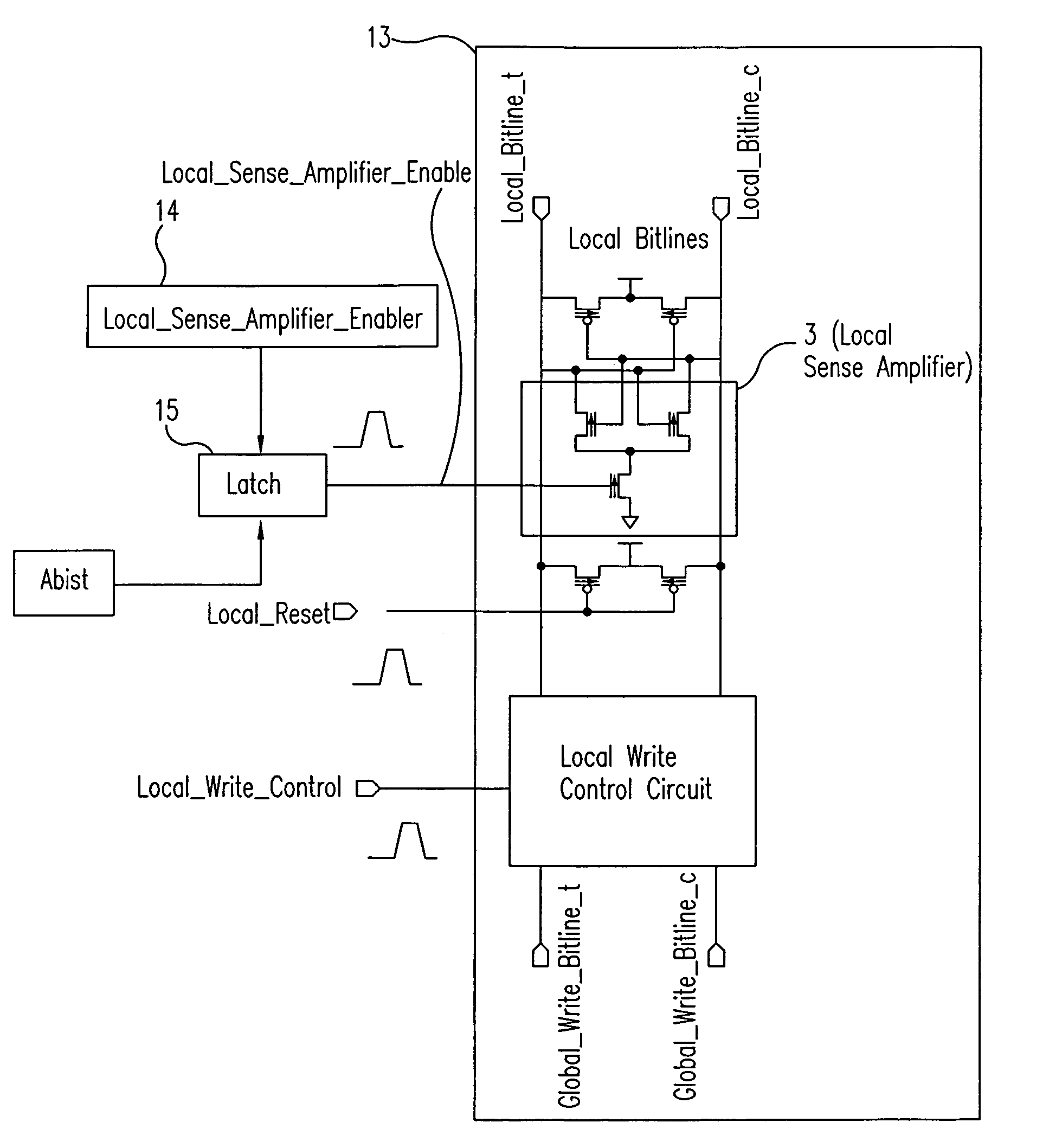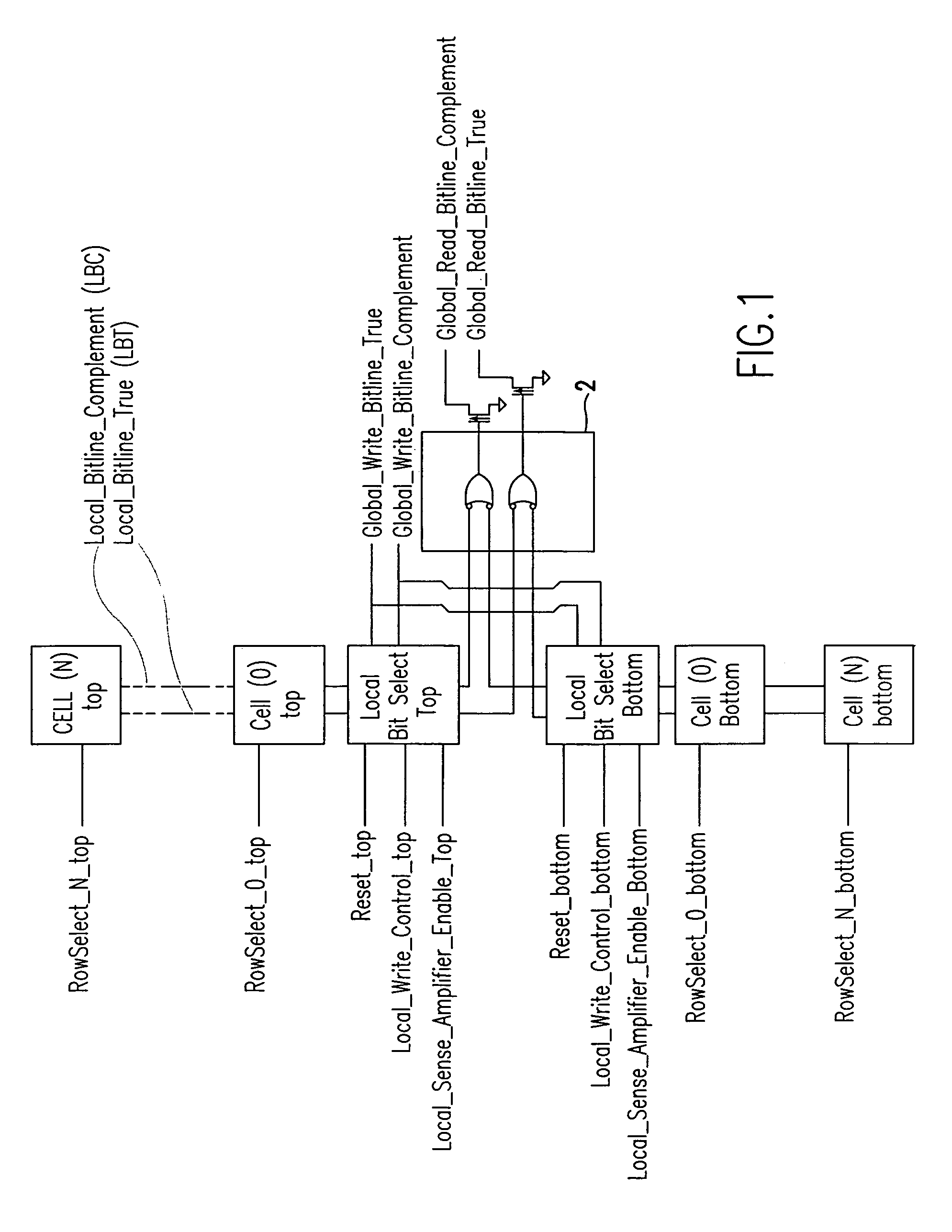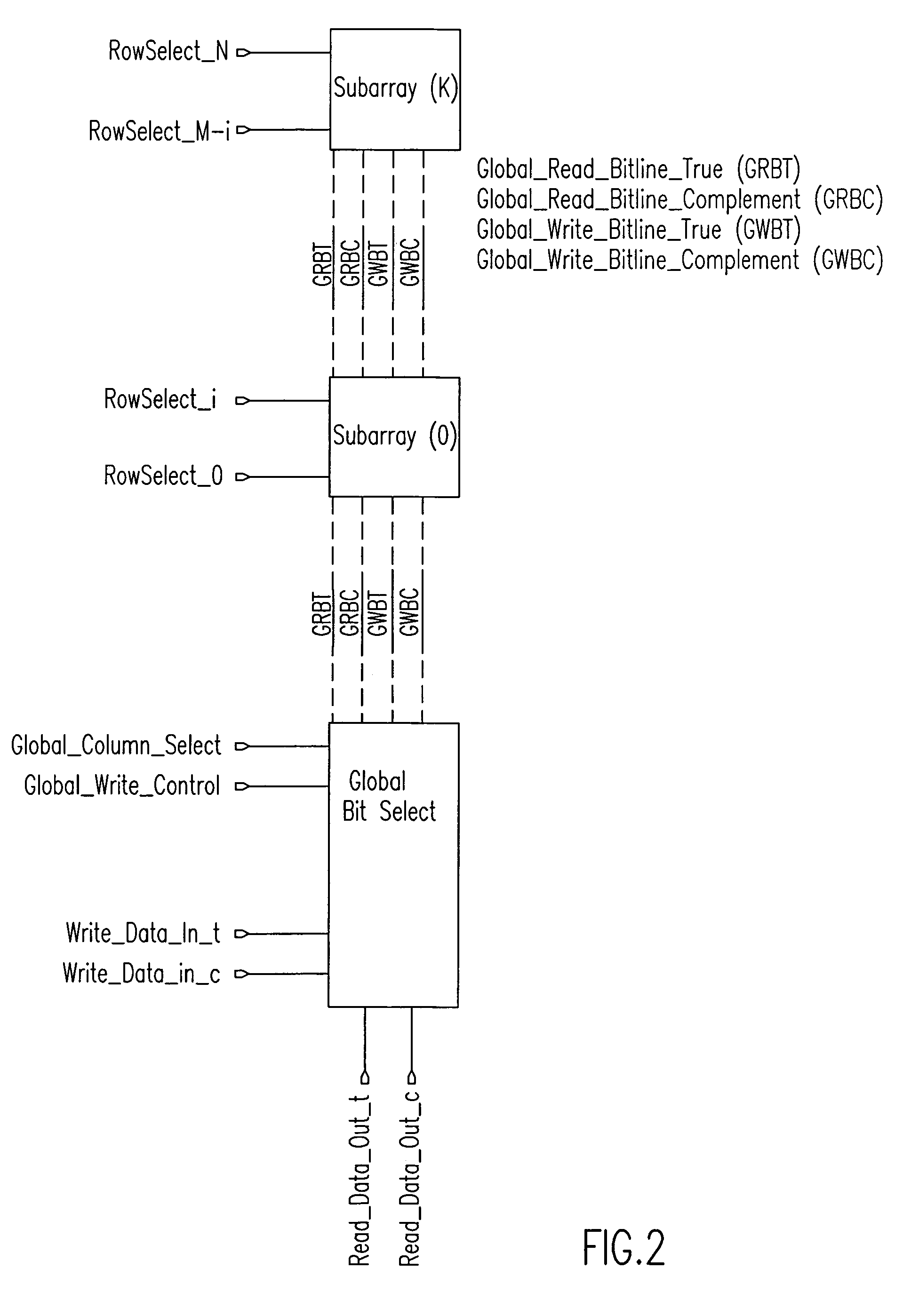Local bit select circuit with slow read recovery scheme
a local bit select circuit and read recovery technology, applied in static storage, information storage, digital storage, etc., can solve the problems of slow reading, fixed or variable performance slow down,
- Summary
- Abstract
- Description
- Claims
- Application Information
AI Technical Summary
Benefits of technology
Problems solved by technology
Method used
Image
Examples
Embodiment Construction
[0014]Referring to FIG. 1, it shows one SRAM “subarray” accessed by one local bit select. This sub-array has 0 through N cells labeled “top” and 0 through N cells labeled “bottom” with the top and bottom cells mirrored around an “OR” function 2, with half the cells on one side and half on the other. Furthermore, both the upper and lower “local bit line pairs” are “OR'ed” together to drive the “wired OR” NFETs that are connected to the global Read Bit line pairs. The Write Global Bit line pairs connect directly to each “local bit select” circuits. Arranging the cells around a central point, reduces the RC delay on the “local bit lines” because the distance to the furthest cell has been reduced, resulting in greater read and write performance.
[0015]FIG. 2 is a one bit by M bit array of a domino SRAM where K sub-arrays (each containing i cells along the local bit lines) are connected to one global bit select circuit.
[0016]Referring now to FIG. 3, a local bit select circuit, incorporati...
PUM
 Login to View More
Login to View More Abstract
Description
Claims
Application Information
 Login to View More
Login to View More - R&D
- Intellectual Property
- Life Sciences
- Materials
- Tech Scout
- Unparalleled Data Quality
- Higher Quality Content
- 60% Fewer Hallucinations
Browse by: Latest US Patents, China's latest patents, Technical Efficacy Thesaurus, Application Domain, Technology Topic, Popular Technical Reports.
© 2025 PatSnap. All rights reserved.Legal|Privacy policy|Modern Slavery Act Transparency Statement|Sitemap|About US| Contact US: help@patsnap.com



